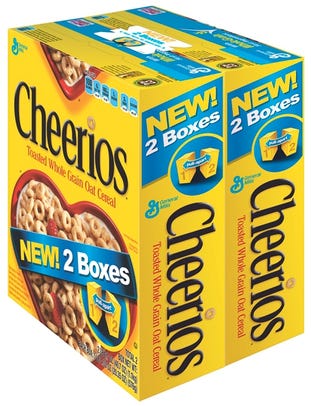
Scott Hemink
As part of Packaging Digest's year-long 50th Anniversary celebration, we'll be asking Packaging Visionaries to share their opinions about and insights into the future of their business.
Leading off this new feature is Scott Hemink, senior R&D manager for Intl. Technical Services at General Mills. The Intl. Technical Services organization includes Packaging R&D, Process Technology and Product Guidance & Insights for all businesses outside of the United States.
Q: What is the most pressing problem in packaging today and why? How do you think it should be solved?
A: The current economic environment continues to be a challenge for many suppliers and consumers. At every step in the supply chain, packaging professionals need to understand the impact of their decisions on total costs. We should also make sure we understand the true consumer desire and requirements for packaging so that we work together to meet those needs without adding excessive costs.
Q: What advice do you have for the next generation of packaging professionals?
A: Think about the package from many different perspectives. Be the consumer of your product and its packaging. What is working well and what could be improved? Be the production supervisor of your packaging. How does it run on the equipment? Partner with the product developer and create a better overall experience for the consumer. How will the material supplier be impacted by your specification? Collaborate with your marketing and design departments to leverage technology to gain attention at the shelf and increase the "fun." Seek inspiration from other product categories and from around the world. Asking these, and many more questions, allows you to really impact the business.
Q: What consumer trends will have the most impact on how products are packaged in the future and why?
A: Sustainability is obviously a major trend and it can mean many different things to different people. Our opportunity is to include environmental sustainability into our design process and continue to optimize the products after launch. We also need to find new ways to communicate this great work to consumers.
Worldwide demand for convenience products is also increasing as we see the rise of the middle class in countries like China and Brazil. It will be critical to understand these consumers' region-specific needs and address them through reapplication of existing technology or through identifying new solutions.
Q: What do you like best about working in the packaging industry?
A: I enjoy working on products and brands that excite consumers. Seeing a finished package on the shelf, hearing comments from consumers and using packaging to address their needs is very rewarding. By doing this well, we can have a positive impact on their lives—whether it is a convenient, quick meal or a fun new way to eat a snack.

Cheerios 2-pack
A LEGACY OF PACKAGING LEADERSHIPSince its start in 1928, General Mills—owner of prominent food brands such as Cheerios, Pillsbury and Yoplait—has added a dash of innovation to its products and packaging:
1920s - The company starts using recycled materials in its paperboard cartons. It is now among the largest users of post-consumer recycled paper packaging in the United States.
1998 - General Mills new Yoplait Go-Gurt!—yogurt in portable, squeezable tubes—is a hit with kids, and parents looking for healthy snacks to pack in lunch boxes. Sales exceed production in the first year. The innovation also meets then CEO Steve Sanger's directive of creating products that can be consumed with one hand.
2000 - The company's Gold Medal all-purpose flour packaging sees its first major packaging change since 1930. Instead of the typical folded paper package, a clear laydown bag has a convenient reclosable zipper.
2005 - Microwave baking takes a leap with Betty Crocker Warm Delights, cake mix in a plastic bowl that doubles as a mixing and serving container, which is contained yet showcased in a paperboard sleeve, saving paperboard. The consumer simply adds water, mixes and then zaps for less than two minutes for a quick, tasty, all-my-own dessert.
2006 - The company's 20-percent-smaller carton for Hamburger Helper—possible because the pasta is redesigned to pack more densely—saves nearly 900,000 pounds of paper a year and cuts its carbon footprint with more-efficient shipping.
2007 - The company opens the General Mills Worldwide Innovation Network (G-WIN), inviting external parties to work with various internal departments to commercialize product, process and packaging technologies to mutual benefit.
2008 - Instead of buying and maintaining inventory of multiple color lids for different flavors of Yoplait yogurt, the company switches to single-color, silver foil lids, saving $2 million a year and boosting packaging line productivity by eliminating changeover downtime.
2010 - The company sources metal cans that are free of the controversial chemical bisphenol-A (BPA) in the lining for some of its Muir Glen organic tomato products.
2012 - For the club store market, the company switches from a single large box with one bag of cereal inside to two boxes linked together with two bags inside. General Mills is able to shorten the boxes, making them easier to store at home, and add 10 percent more product by using a proprietary method to settle the cereal in the box on the production line instead of waiting for the settling to occur on a truck during transit.
General Mills becomes a member of the American Institute for Packaging and the Environment (AMERIPEN).
The company supports the How2Recycle Label, a voluntary recycling labeling system developed by GreenBlue's Sustainable Packaging Coalition (SPC), to provide clear recycling information to consumers and conform to the Federal Trade Commission (FTC) "Green Guides."
.
About the Author(s)
You May Also Like




